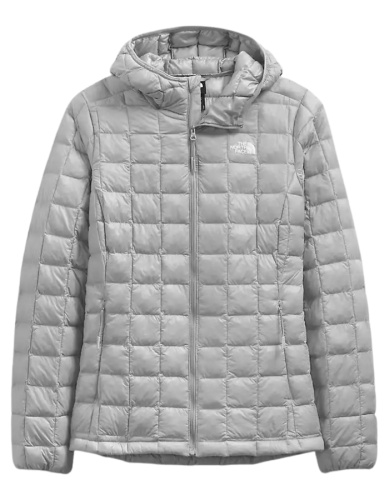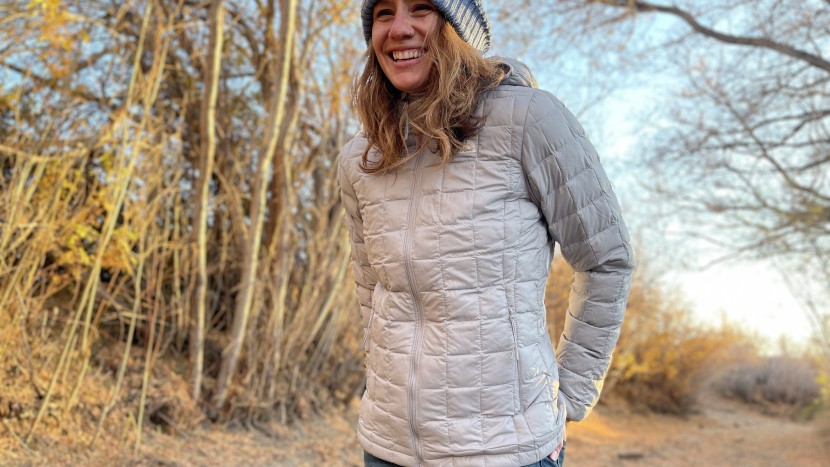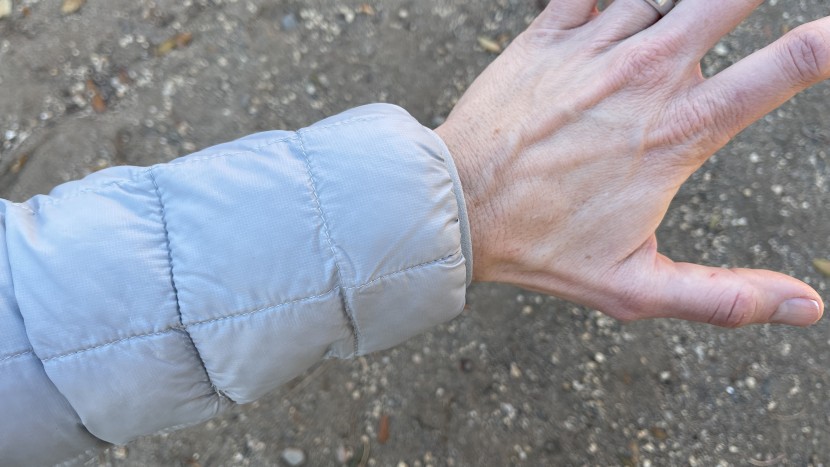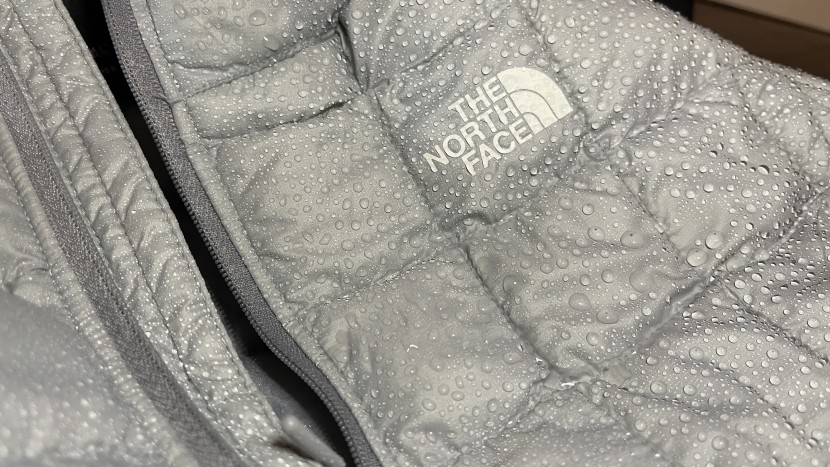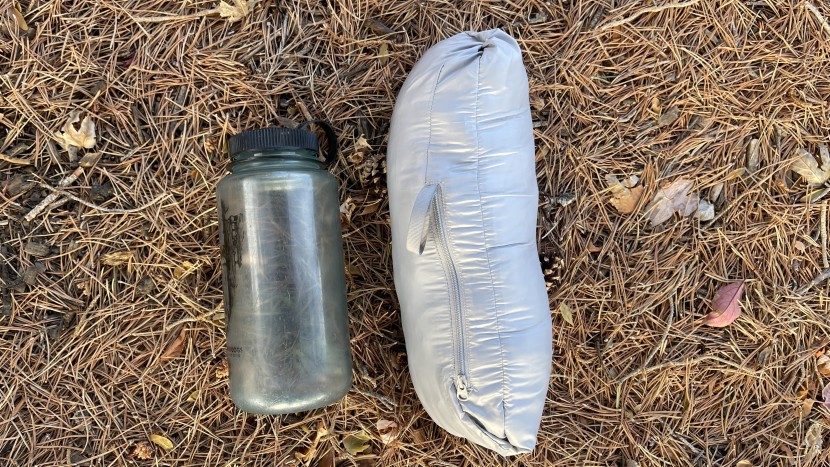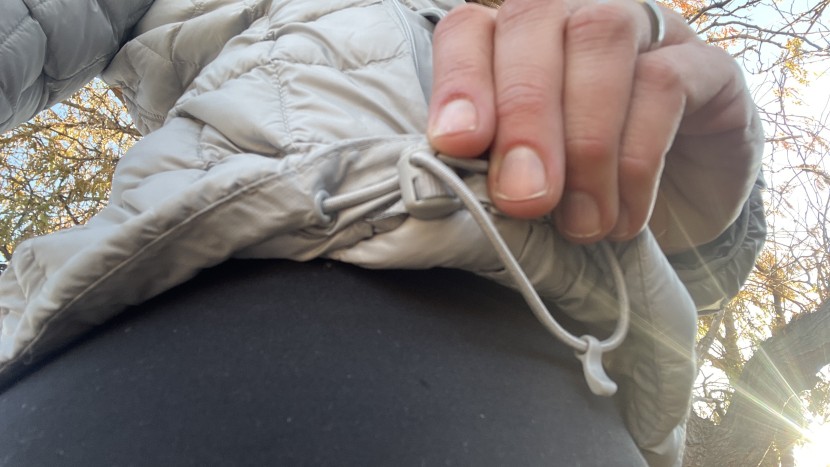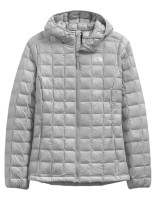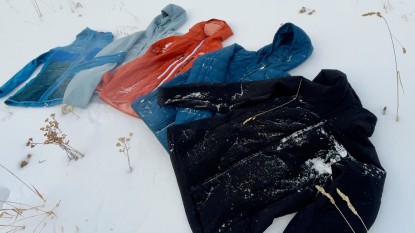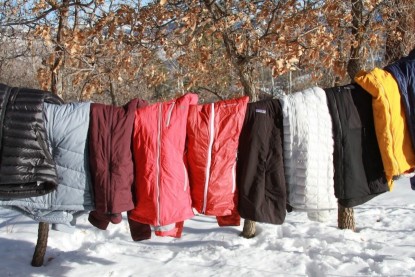The North Face Thermoball Eco Hoodie 2.0 - Women's Review

Our Verdict
Our Analysis and Test Results
The North Face Thermoball Eco Hoodie 2.0 is a lightweight jacket with a relaxed fitted hood and a relaxed slim fit. Its exterior material is 100% recycled nylon, and the hem has a single bungee cord adjustment point. It has three pockets; two hand pockets with zippers and an interior zippered chest pocked into which it can be packed away.
Warmth
Though a thin jacket, the Thermoball Eco packs dense insulation that's warmer than other similar models. Where it loses points for warmth is in its lowered coverage. The torso isn't nearly as long as most other models, and it has just the barest hint of a drop hem to keep your back and upper bum covered. The sleeves are also much shorter than most others and end in an elastic cuff that leaves your hands fully exposed. Without mobility features to make the shoulders complement your body motions, those short sleeves can leave wrists exposed as you reach. The hem does have a single adjustment point for a bungee cord that can seal the whole bottom of this jacket and the hood is well-fitted and protective.
Comfort
A classically swishy puffy jacket, the Thermoball 2.0 hides few surprises in how it feels. It has a very subtly tapered waist in its overall relaxed slim fit. Its dense insulation and standard construction make it harder to move in, creating pressure points when bending at the shoulders and elbows. The cuffs are also on the loose side, adding to the overall “fine, but not great” feel of this jacket.
Weather Resistance
The fabric and insulation of the Thermoball do a great job blocking out wind, aided by a full-length wind guard behind the main zipper. Cinching the bottom hem tight also protects your inner warmth on windy days, though doing so leaves more of your lower half exposed than most jackets. When pitted against precipitation, the Thermoball shed most water, though some soaked into the seams of the excessive number of baffle edges. We didn't get wet underneath, but it didn't leave us with a lot of confidence in its water-resistance after years of wear.
Weight and Compressibility
The size Small Thermoball we tested weighs 12.6 ounces, a bit heavier than average in our test fleet. It can be packed into its chest pocket, though doing so proved challenging. The zippered opening is quite small, making it difficult to stuff this densely insulated jacket through that narrow space. The actual pocket itself provides an adequate amount of space to accommodate the jacket but getting it in (and out of) there is a chore.
Breathability
With dense insulation meant to keep you warm rather than let you breathe, we're not surprised by the unimpressive breathability of the Thermoball. Loosening the hem helps some, as do the shorter sleeves that leave your hands exposed. At the end of the day, this jacket is built for warmth, not for breathability.
Should You Buy The North Face Thermoball Eco 2.0?
The Thermoball is a decent everyday jacket with an above-average price tag. If you prefer shorter sleeves with exposed hands and a dense, stiff jacket body, it may be worth its cost. But for similar — and sometimes lower — price points, we found numerous jackets with better technical and everyday performance.
What Other Insulated Jackets Should You Consider?
The Thermoball Eco 2.0 is a popular jacket that's warm but lacks coverage and mobility. For more weather protection in a warmer jacket, the Patagonia DAS Light is a great standalone jacket for most cold-weather pursuits. If you want something breathable for winter exercise, we recommend the Ortovox Swisswool Piz Boè.
| Awards | |
|---|---|
| Price | $250 List Check REI (on sale!) |
Overall Score  |
|
| Star Rating | |
| Bottom Line | A casual jacket that has less extensive coverage than most yet is warm for how thin it is |
| Pros | Warm for its thinness, simple but quality design, packs into its own pocket |
| Cons | Less coverage than others, difficult to pack into its pocket, shoulders are snug for movement, many baffle seams create weak points |
| Rating Categories | The North Face Therm... |
| Warmth (25%) | |
| Comfort (25%) | |
| Weather Resistance (20%) | |
| Portability (15%) | |
| Breathability (15%) | |
| Specifications | The North Face Therm... |
| Measured Weight (Size S) | 12.6 oz |
| Number of Pockets | 3 (2 zippered hand, 1 internal zippered chest) |
| Hem Type | Single bungee adjustment |
| Fit | Relaxed slim |
| Insulation | Thermoball Eco (100% recycled polyester) |
| Outer Fabric | 20D 100% recycled nylon with non-PFC durable water-repellent |
| Lining | 30D 100% recycled polyester |
| Hood Option | Yes |
| Built-In Stow Pocket | Yes; chest |
| Cuff Construction | Elasticized cuffs |


